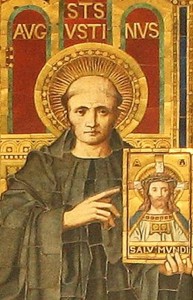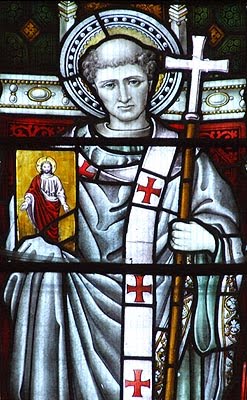 In places like England the Christian origins of the country are keenly recalled and lived when the Church celebrates a feast day like that of Saint Augustine of Canterbury who is known as the apostle to England. Augustine, a Benedictine monk was sent by Pope Gregory the Great to re-evangelize south-eastern England, which had reverted to paganism in the fifth and sixth centuries. Like Paul and Silas in today’s reading at Mass, we can see the grace of conversion in the unexpected: I am sure Augustine had no idea what he was going to find in England –but we know the outcome: many came to know Jesus Christ as Savior. Perhaps today we can be surprised by the Lord working in our life and how he uses us to bring others to Him.
In places like England the Christian origins of the country are keenly recalled and lived when the Church celebrates a feast day like that of Saint Augustine of Canterbury who is known as the apostle to England. Augustine, a Benedictine monk was sent by Pope Gregory the Great to re-evangelize south-eastern England, which had reverted to paganism in the fifth and sixth centuries. Like Paul and Silas in today’s reading at Mass, we can see the grace of conversion in the unexpected: I am sure Augustine had no idea what he was going to find in England –but we know the outcome: many came to know Jesus Christ as Savior. Perhaps today we can be surprised by the Lord working in our life and how he uses us to bring others to Him.
The Roman Missal for use in England has this prayer for Mass:
Almighty God, who by the mission of the Bishop Saint Augustine of Canterbury called the English people into the wondrous light of the Gospel, grant through his intercession, we pray, that faithful to that same Gospel proclaimed we may strive to make known your truth and build up your Church on the foundations he laid.
In the USA the two Benedictine communities that come to mind who have dedicated their oratories to the memory of Saint Augustine of Canterbury are the monks of Marmion Abbey (Aurora, IL) where they abbey church to Augustine and the monks of St Louis Abbey where the Latin Mass chapel is dedicated to both Sts Gregory AND Augustine. Blessings to both monastic communities.



